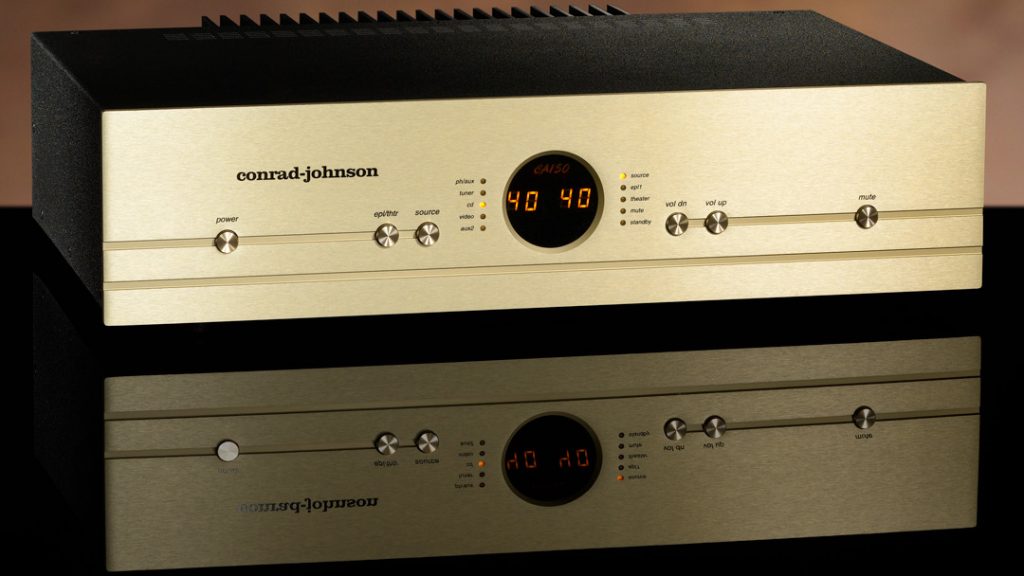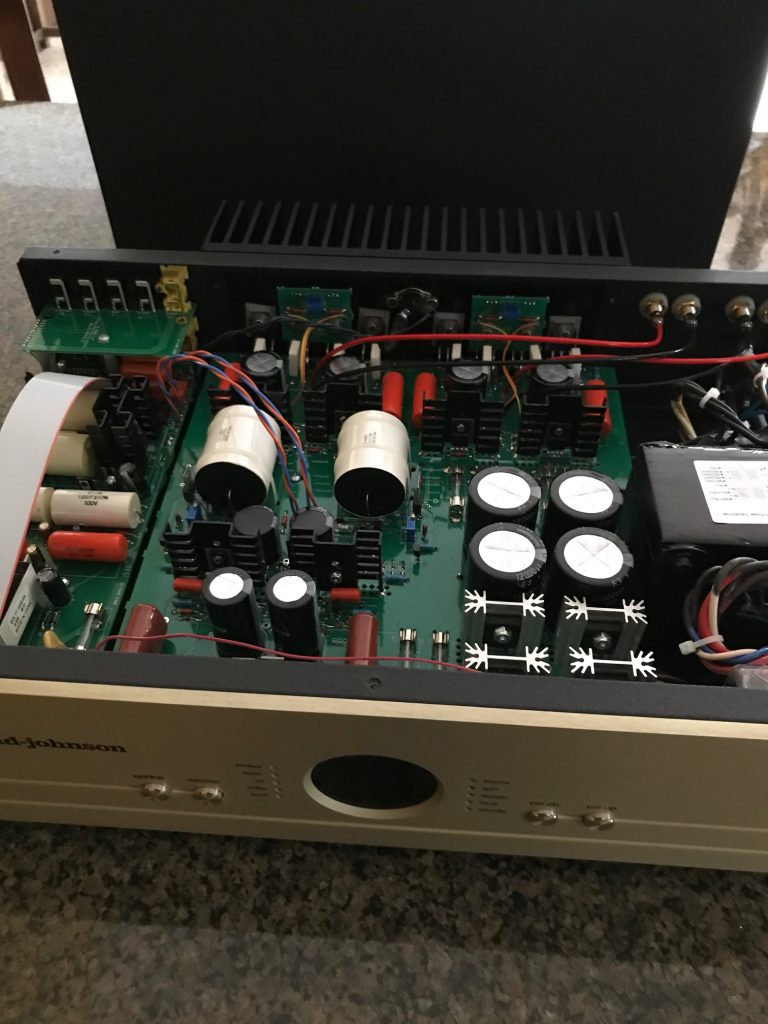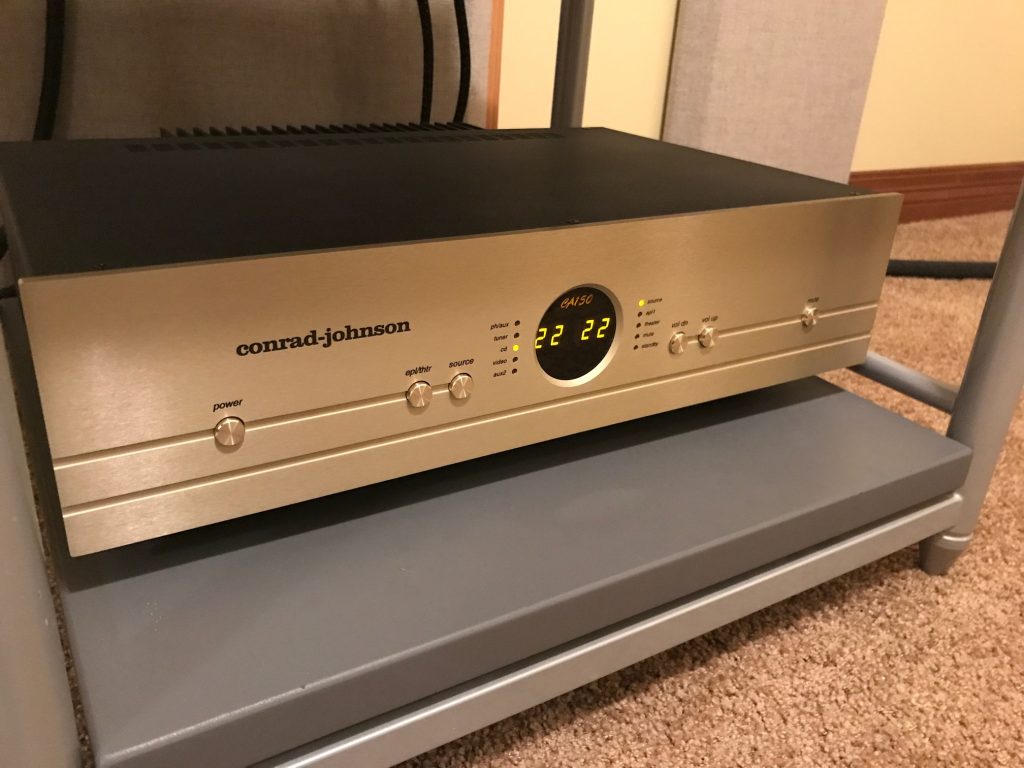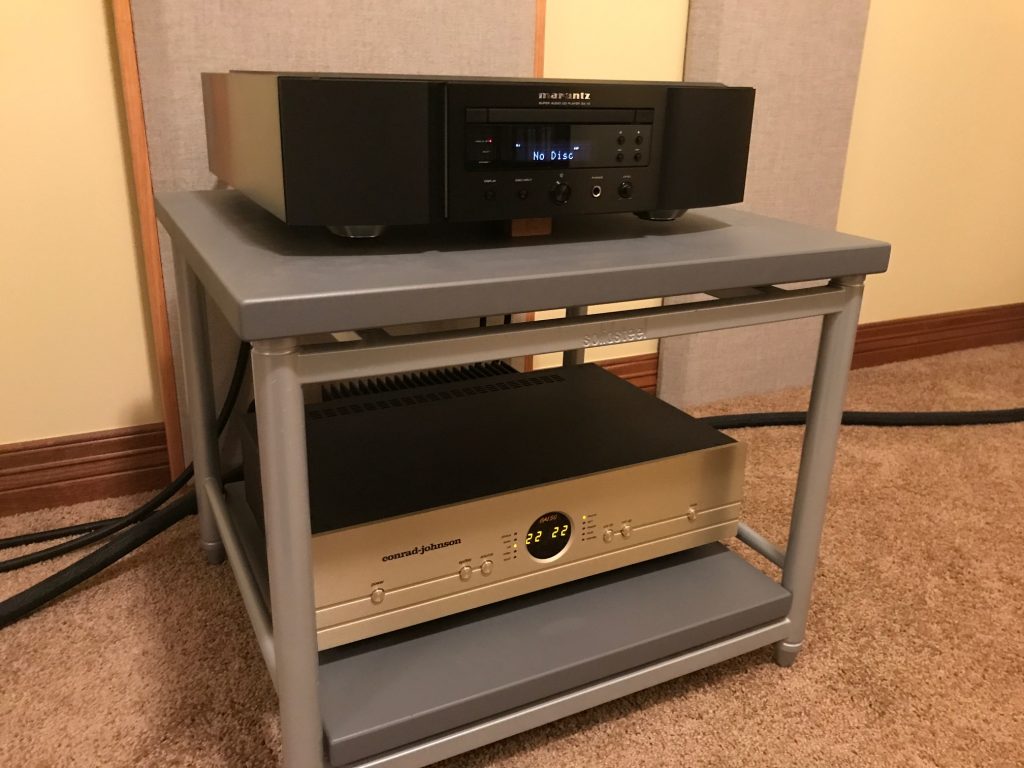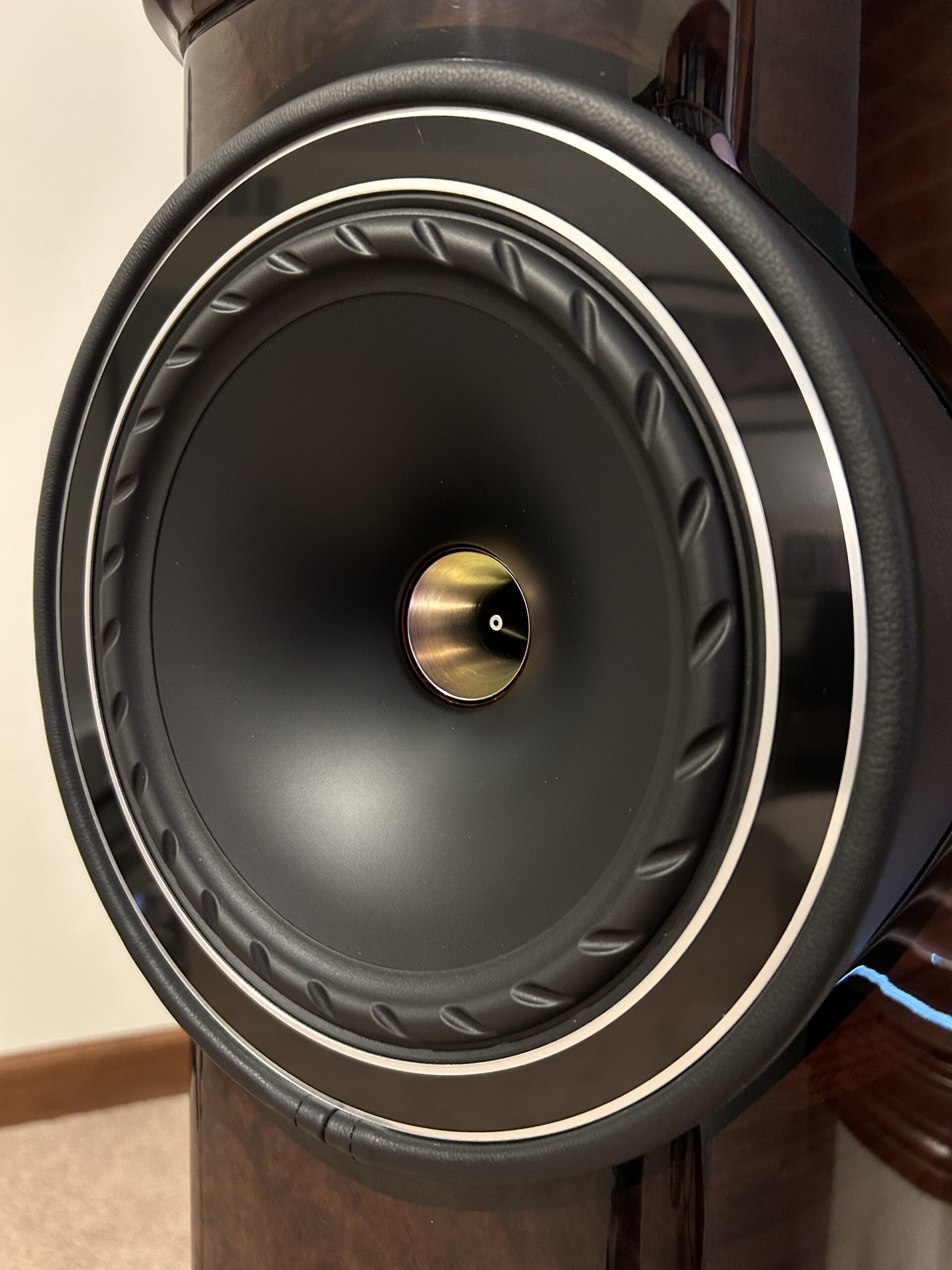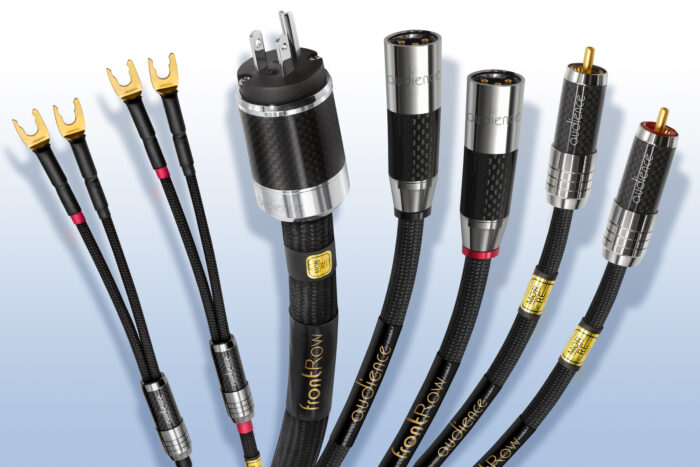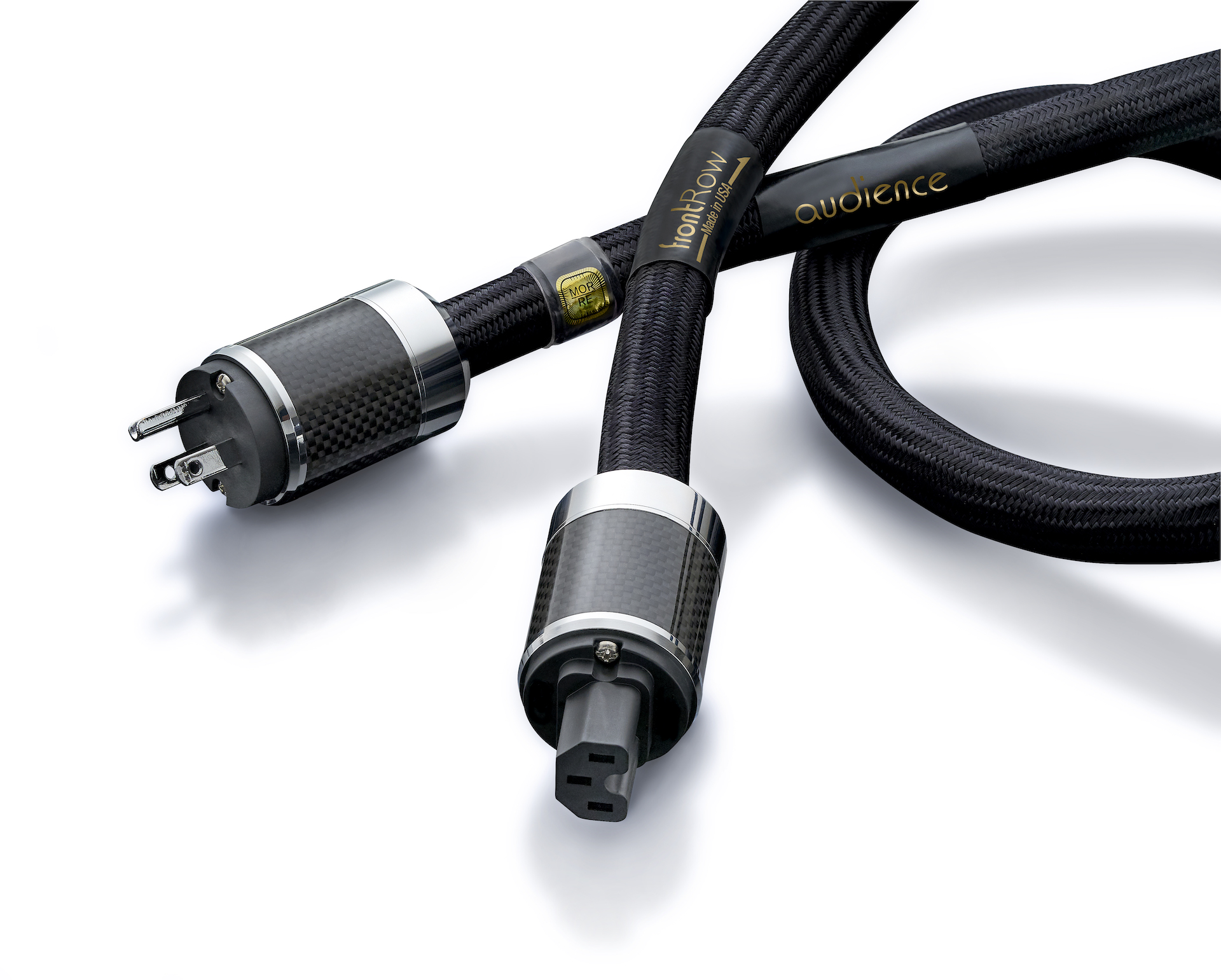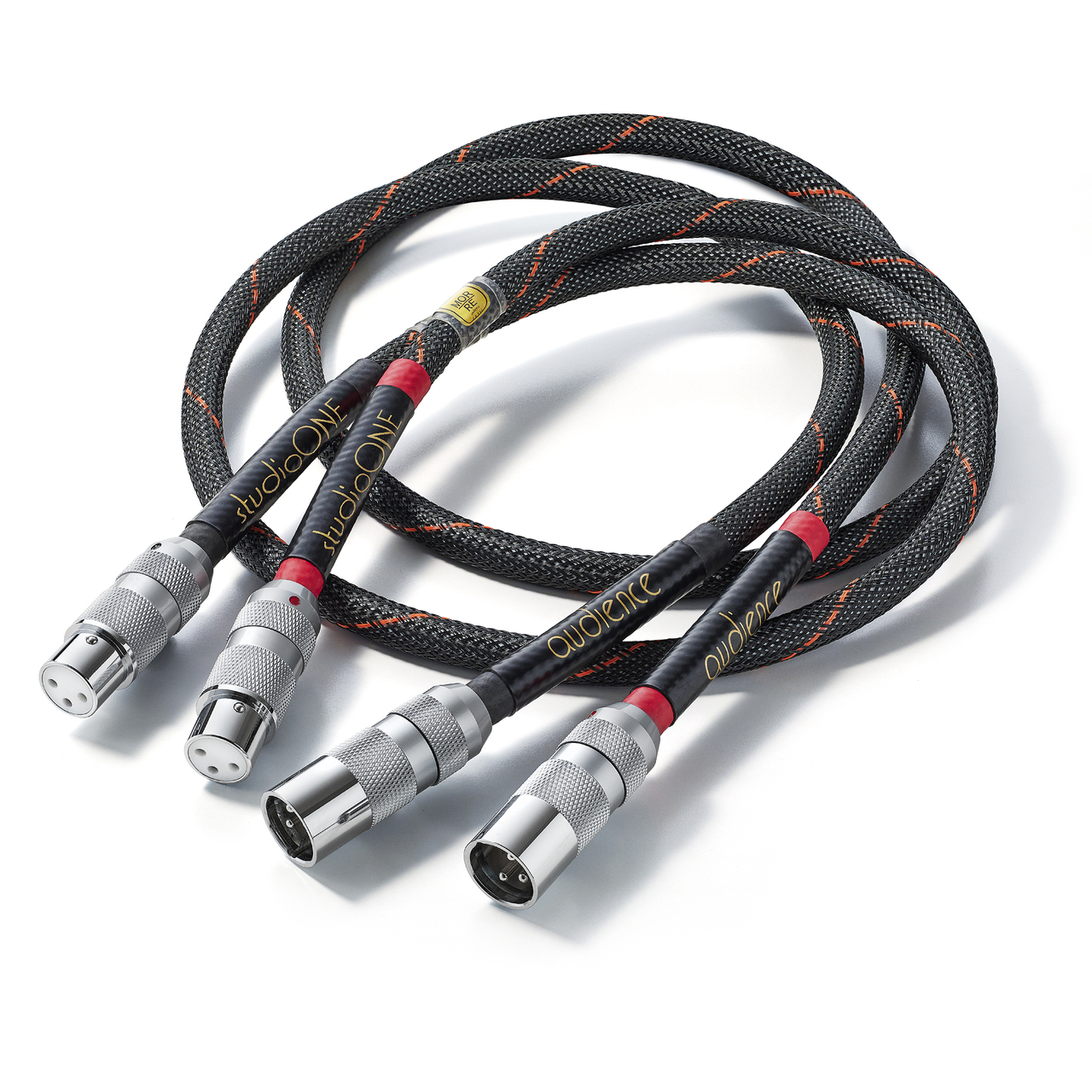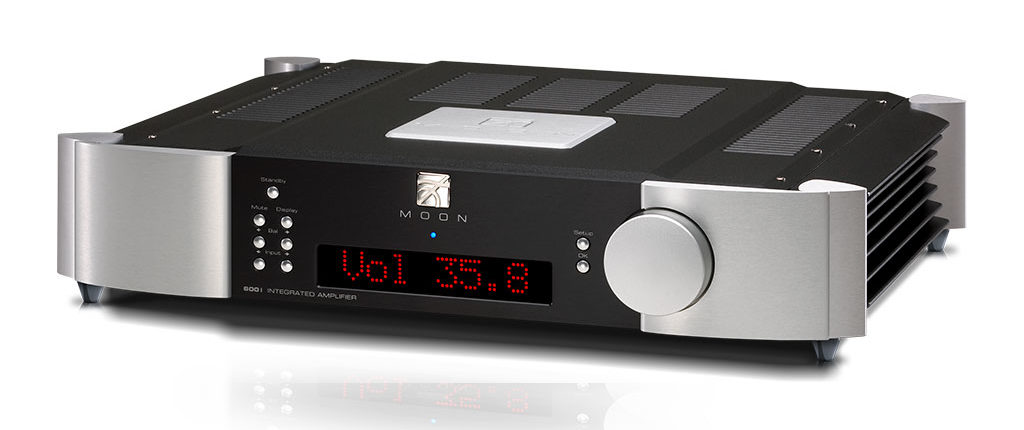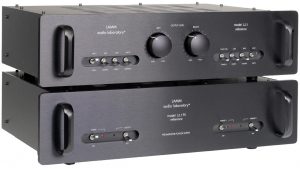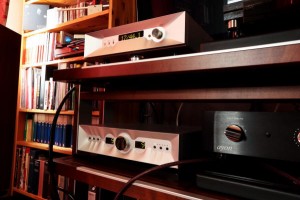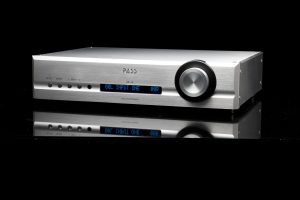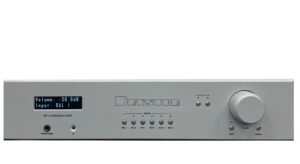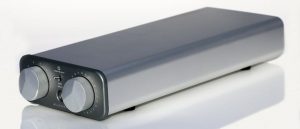Bill Conrad and Lew Johnson of Virginia-based conrad-johnson feel that typical integrated amplifiers are compromised in performance compared to high-end separates. Audio manufacturers, they posit, build integrated amplifiers to meet a price point, sacrificing parts quality and sonics along the way. The CA150 Control Amplifier represents conrad-johnson's answer to the ubiquitous integrated amplifier. Note the subtle distinction in terminology—conrad-johnson refers to the CA150 as a "control" amplifier. This is deliberate. The CA150 eliminates the active line-stage portion of an integrated amplifier, instead marrying a high-sensitivity power amplifier to passive input / output switching circuitry and a volume attenuator. Obviating the expense and added circuitry associated with an active line stage results in a purer sound and more room in the budget for higher-quality parts.
conrad-johnson based the design of the CA150 on its MF2275 power amplifier. As with all conrad-johnson amplifiers, the CA150 employs low negative feedback and a simple circuit design utilizing premium-quality parts. The "control" portion of the CA150 includes numerous input and output connections for source-switching and a Burr Brown level control for adjusting volume and balance in precise 1dB increments. Like all conrad-johnson products, the CA150's faceplate is finished in the company's distinctive gold patina.
Internally, the CA150 is well laid out, and features a FET voltage gain stage mated to a high-current bipolar output stage, the purported advantages of which are a tube-like transfer courtesy of the FET gain stage and a high-damping factor with minimal negative feedback courtesy of the bi-polar output stage. Parts quality is high, with all resistors in the audio circuits and power supply comprising premium metal film types. All capacitors in the audio path use polystyrene and polypropylene dielectrics. Even the large electrolytic power supply reserve capacitors are bypassed by polypropylene types. For a premium in price, an "SE" version of the CA150 can be had, which includes multiple capacitor upgrades to conrad-johnson's exclusive Teflon CJD models, as well as resistor upgrades to even higher-performance, Vishay precision metal foil types. In keeping with conrad-johnson's design ethos of simple circuit design, the CA150 is single-ended in topology (i.e. not differentially balanced).
The front of the CA150 contains buttons to control source-switching, volume, mute, power, and rare in a modern design, provisions for selecting an external processor loop, such as an equalizer or cassette deck, and for engaging the home-theater pass-through. The circular display window in the center of the faceplate provides numeric indication of volume levels for each channel.
Half of the rear of the CA150 is taken up by a substantial external heatsink for the amplifier output stage. The heatsink is centered on the back panel, leaving room on one side for the myriad of line-level input and output connections, and on the other side for the speaker binding posts and IEC power inlet. Given how much real estate is occupied by the heatsink, space is a bit tight for making connections, especially for the speaker binding posts, which are situated uncomfortably close to the heatsink and power receptacle. All connectors are of commendably high quality.
The CA150 includes a remote control that duplicates all functions contained on the front panel and adds the ability to adjust channel balance and the provision to directly select the external processor loop. The remote control is fashioned from plastic, which represents a marked departure from the metal remotes included with some of conrad-johnson's other offerings.
Specifications for the CA150 include a continuous power output of 135-watts per channel into 8 ohms, both channels driven from 20Hz to 20kHz at no more than 1% harmonic or intermodulation distortion. Small-signal distortion is claimed to be less than .1% in the midrange, and hum and noise is specified as 100dB below rated power. The input impedance is 10k ohms, and the amplifier is non-phase-inverting at the speaker and subwoofer line-level outputs. The CA150 measures 19" wide by 14.625" deep by 4.5" high, and measures 33 pounds. The CA150 is warranted for a period of three years.
The conrard-johnson CA150 arrived well packed in a sturdy cardboard box and included, in addition to the amplifier itself, a power cord, the aforementioned remote control and accompanying batteries, and a well-written and informative user manual. Installing the CA150 in my system proved to be uneventful, and the CA150 performed reliably and confidently at all times. The CA150 was quiet, with no transformer hum or buzz, and I had to place my ears right next to the tweeters in my speakers to discern any hiss. Operationally, the only quibble I had with the CA150 was the thump experienced a few seconds after turning the unit off as the power-supply capacitors discharged. While not loud in level, it was nevertheless alarming to witness my woofers subjected to such high excursion levels. The CA150 ran cool while on, with only the heatsink becoming moderately warm. I typically left the CA150 powered up at all times to maximize performance and experienced no adverse effects as a result of having done so.
During the course of the review period, my system comprised Simaudio MOON CD5.3 and Marantz SA-10 digital players, Audio Physic Tempo Plus and Monitor Audio Gold 100 loudspeakers, Kimber Kable Hero AG and Kimber Select KS-1036 interconnects, Kimber Monocle X speaker cables, Audience aR2p-TO power conditioner and powerChord 'e' power cords, with room treatments by Acoustic Sciences Corporation. All components were placed on a SolidSteel 6.2 Audio Table, and the Monitor Audio Gold 100 speakers took up residence on Sanus Ultimate Foundation speaker stands.
As has been my experience with other conrad-johnson products, the CA150 required a significant amount of break-in to sound its best. The CA150 never sounded less than good, even fresh out of the box, but over the course of the first 200 - 300 hours, the treble opened up, the midrange became more dimensional, and the bass gained in depth and impact.
So how did the conrad-johnson CA150 sound? In a word, glorious. Bill Conrad and Lew Johnson have a knack for imbuing their products with an ineffable sweetness and purity of tone in the midrange, and so it was with the CA150. The pellucid nature of the CA150's midrange lent vocals in particular a verisimilitude that I've rarely experienced in my system. Joni Mitchell's voice in "Willy" and "Big Yellow Taxi" off of her Ladies of the Canyon CD (Reprise 6376-2) was expressive and liquid, and the little micro-dynamic shadings brought out by the CA150's superior mid-band resolution were goose-bump inducing as I sat transfixed in my chair. Likewise, Bob Seger's vocals on "Jody Girl" and "A Fine Memory" from his Beautiful Loser (Capitol 72438-19820-2-0) album were palpable and dimensional, and there was the right amount of burnish to Seger's voice as his range dropped when he lays bare his vulnerability in the verses. Listening to "Via Caliente" from William Orbit's Strange Cargo CD (IRS X2-0777-7-13195-25), I was struck by the jaw-dropping realism of Orbit's flamenco-styled acoustic guitar playing, and the CA150 did an exceptional job of sorting out the multitude of multi-tracked instruments flitting in and out of the larger musical picture.
An album like Dave Brubeck's seminal Time Out recording (Columbia/Legacy CK 65122) provides the perfect showcase for the CA150's sublime reproduction of the treble region. Joe Morello's cymbal work on the title track and "Strange Meadowlark" shimmered with the requisite attack, bite and sustain. The solo violin introduction to Steeleye Span's "Searching for Lambs" from the Tempted and Tried release (Shanachie 64020) was reproduced with a beguiling sweetness. The CA150 possessed consummate air and extension, and even on less-than-stellar recordings like the aforementioned Bob Seger Beautiful Loser CD, percussion was portrayed in a realistic, grain-free manner, with cymbals sounding less like white noise and more like wood on metal.
Gordon Sumner, better known to the world as Sting, is renowned for his songwriting and vocal duties, first as a member of The Police and then as a successful solo artist. Sting is also an accomplished bass player, and with the CA150 in my system, his playing on "La Belle Dame Sans Regrets" from his Mercury Falling CD (A&M 540483) was supple and fluid, and was clearly delineated from the jazz-inflected percussion and keyboard interplay. Bass depth and power were also well served by the CA150, as evidenced by the room-shaking experience when I listened to "FracKtured" from King Crimson's ConstrucKtion of Light CD (Virgin 72438-49261-2-0) or "Spin" from Redshift's eponymous release (Champagne Lake CLPCD002).
Imaging and soundstaging were strong suits of the CA150. Soundstage width and height were well served by the CA150, and it did an outstanding job recreating soundstage depth. Images were presented back behind the speakers and were layered appropriately within the soundstage. Vocalists and instruments were dimensional and palpable, with a reach-out-and-touch-them quality that proved addictive. Image focus was excellent, but did not possess the laser-lock made notable by other amplifiers. Immediacy was similarly impressive, but the CA150 was more relaxed than some competitors that are more upfront in their overall soundatage presentment.
Comparing the conrad-johnson CA150 control amplifier to my reference integrated amplifier, the Bel Canto S300iu, proved enlightening. From a design perspective, the two amplifiers could not be more different. Whereas the CA150 mates a passive volume attenuator and source-switching facilities to a class A/B output stage, the S300iu couples an active line-stage preamplifier to dual-mono class-D output stages. Power specifications are very similar, with the Bel Canto outputting 150 watts per channel, compared to the conrad-johnson's 135 watts. Now out of production, the Bel Canto S300iu retailed for $2200 with optional USB DAC. Sonically, the two amplifiers shared an overall neutral and uncolored approach to musical reproduction, but diverged in a few key areas. The Bel Canto possessed a more upfront presentation, pushing the stage closer to the listener. Macrodynamics were also more explicit, lending the S300iu a more bombastic feel. The conrad-johnson, on the other hand, was cut from a more relaxed cloth. The soundstage was more recessed, with better portrayal of depth and layering of instruments. The CA150 did not place as much emphasis on macrodynamics, but countered with exquisite rendering of microdynamics, those subtle dynamic shadings between notes that help to remove the veil of artifice. The S300iu was a touch more controlled in the bass, with kick drums reproduced in a very taut manner. The CA150, conversely, had a little more bloom, without erring to the extreme of overt warmth or bloat. Both amplifiers were extended and airy in the treble, with the CA150 possessing a greater level of sweetness and an utter lack of grain. The CA150 pulled away from the S300iu in the critical midrange, with its golden-hued, expressive and organic reproduction exposing a hint of grayness and two-dimensionality on the part of the Bel Canto.
I'll not mince words. The conrad-johnson CA150 control amplifier is a superb performer. Transparent, resolving and nuanced, with a midrange bordering on the sublime, the CA150 succeeds at all levels in connecting the listener with his or her favorite music. With sufficient power on tap to drive most speakers and a wealth of connectivity options to support almost any music lover's source components, the CA150 represents a flexible solution for audiophiles looking for the convenience of one-box amplification without compromise.
CA150 Control Amplifier
Retail: $5000
conrad-johnson design




